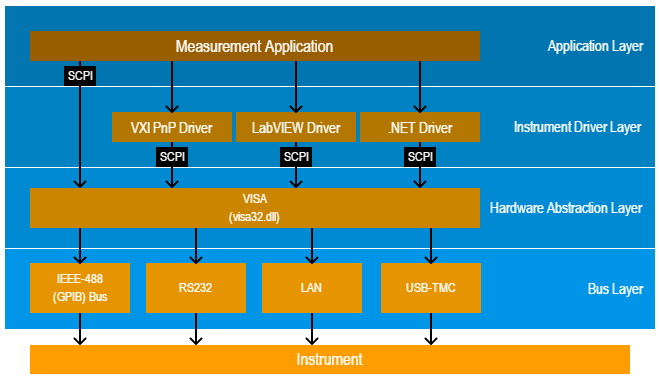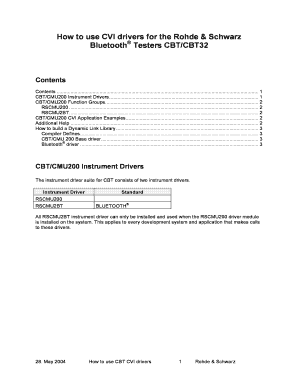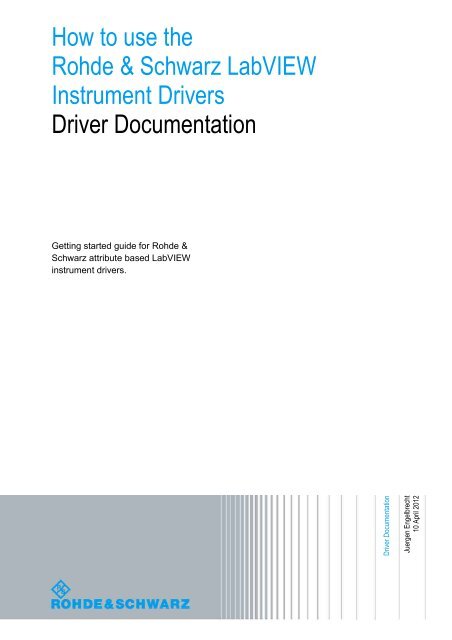IVI.NET driver history Rohde & Schwarz 4 3 IVI.NET driver history RsSpecAn Instrument Driver Driver history for C#, Visual Basic.NET Revision Date Note 4.65.3 10/2020. New core 2.12.0 for AnyCPU driver assembly build. Modified properties/methods: - RsSpecAn.NR5G.Downlink.Analysis.TraceData.FetchAllocationSummary - bug fixed. Rohde & Schwarz VISA IO trace utility is called RsVisaTraceTool. You can find it in Windows Start Menu - All Programs - R&S VISA - Trace Tool. Detailed description is available in the R&S VISA Manual placed in the same folder. RsVisaTraceTool logging the.IDN? Query communication.
Rohde & Schwarz and AVL have intensified their collaboration with the integration of a Rohde & Schwarz radar test system into the AVL DRIVINGCUBE™ toolchain, creating new possibilities for testing radar enabled advanced driver assistance systems (ADAS) features and validating autonomous driving functions with a vehicle-in-the-loop test bed. Now complex driving scenarios can be generated and tested in a safe and reproducible environment.
The validation of complex ADAS and automated driving (AD) functions such as emergency braking, adaptive cruise control and highway chauffeur in all possible driving scenarios and environmental conditions requires huge amounts of functional and non-functional validation and can be risky when conducted on roads. Additionally, the new challenges of AD means that conducting conventional real-world tests is often not feasible on roads. Instead, test methods are virtualized using an X-in-the-loop approach such as the AVL DRIVINGCUBE™.


The AVL DRIVINGCUBE™ combines both simulation and real vehicles on a chassis dynamometer and powertrain testbed. It provides a new way to speed up the validation and approval process of ADAS and AD systems. The key concept of this solution is operating the real vehicle in a virtual environment, taking into consideration all parts of the 'sense, plan, act' chain. Connecting the virtual environment to the real built-in sensors requires cutting-edge simulation technology. The conditions are completely different to those of an isolated sensor lab—particularly for test beds.

Following their work together on GNSS simulation, AVL and Rohde & Schwarz are now collaborating on radar target simulation on the AVL DRIVINGCUBE™.
Rohde & Schwarz Hmp4040
The Rohde & Schwarz radar test system opens up a completely new range of possibilities for testing radar-enabled ADAS features and ensuring the safety of autonomous driving functions with vehicle-in-the-loop test beds. Innovative antenna array technology allows complex artificial objects to be generated for the radar sensors at variable distances and with variable radial velocity, size and azimuth – without physically moving antennas or devices. A responsive real-time interface and seamless integration into AVL's virtual testing toolchain allow even challenging, complex and risky driving scenarios to be generated and tested.

The system is fully future-proof thanks to a modular and scalable concept. This means that the same test bed can be used for tests of all types of vehicles with a different number of radar sensors and various sensor variants. The solution is used for the validation and application of adaptive cruise control, lane keeping assist and other ADAS or AD functions. Furthermore, Euro NCAP scenarios can be validated in a reproducible and safe environment.
Rohde Schwarz Eb200
This strategic collaboration between AVL and Rohde & Schwarz represents a game changing solution for testing and validation of radar-enabled ADAS and AD.

Police officers followed a Chevrolet Monte Carlo that drove away from a house suspected of hosting drug trafficking. The officers subsequently stopped the vehicle after learning that the Monte Carlo’s registration had been revoked and that it was registered to Defendant, whose driver’s license had also been revoked. The driver, who was identified as Defendant, indicated that the car was not insured. The officers decided to tow and impound the vehicle. During an inventory search, the officers found drug and drug paraphernalia in a purse on the passenger seat of the Monte Carlo. Defendant was charged with possession of a controlled substance and possession of drug paraphernalia. Defendant filed a motion to suppress, aruing that the initial stop was lawful but that the search was unconstitutional because the police were not authorized to impound the vehicle, and the inventory search itself was pretextual. The district court denied the motion. The court subsequently found Defendant guilty on both counts. The Supreme Court reversed, holding that the impoundment was unreasonable, and therefore, the resulting inventory search was unconstitutional.
